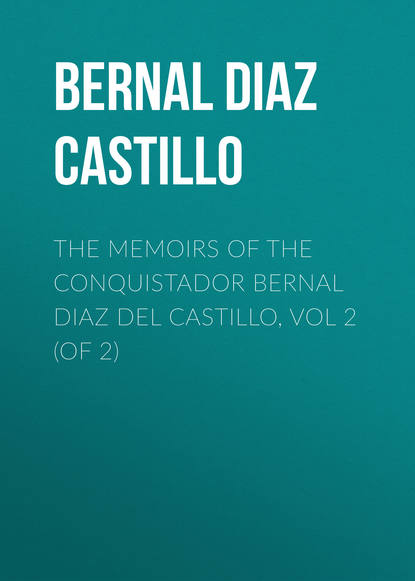 Полная версия
Полная версияПолная версия:
The Memoirs of the Conquistador Bernal Diaz del Castillo, Vol 2 (of 2)
57
A little below, Bernal Diaz particularly mentions Cojohuacan. (p. 364.)
58
Gomara agrees with Bernal Diaz as to the day of Cortes' death, (the 2d day of December, 1547,) but says he was sixty-three years of age. (p. 364.)
59
Our author omits to mention anything about the third daughter. In these passages we cannot sufficiently admire the excellent feeling of the old soldier, which was charitable to a degree; for though he had great reason to complain of the neglect he suffered from his hero Cortes, yet, after his death, he tries to raise him in your estimation, and he lets him die an honest man. (p. 365.)
60
The famous general Gonsalo Hernandez de Cordoba. (p. 373.)
61
The inns in Spain, which stand along the high roads at great distances from any town, are called ventas, and are mostly built by government. (p. 378.)
62
This passage proves volumes for the honesty, judiciousness, and education of the author; for uneducated minds are fond of large numbers to create astonishment, but he takes the least number, while the so termed learned historians have not hesitated to employ ridiculous exaggerations. Gomara, for instance, says that 20,000 human beings were annually sacrificed to the idols within the circle of Cortes' conquests; according to others, 50,000. Herrera goes further, for he says that frequently from 5000 to 20,000 human beings were sacrificed in one day at Mexico and in the surrounding neighbourhood. (p. 388.)
The Spaniards must have been remarkably active in those days, for Cortes first arrived at San Juan de Ulloa in the year 1519; in August, 1521, he took the city of Mexico, which was converted into a heap of ruins by the siege; in the month of June, 1526, he returned from the Honduras, and there stood a new city, with many churches, cloisters, palaces, fortifications, and most probably also an amphitheatre for bull-fights. (p. 393.)
63
Respecting this celebrated artist, see a former note. (p. 391.)
64
The inland trade of New Spain was considerable as early as in the year 1531. In the market of Tlascalla alone there were annually slaughtered from 14,000 to 15,000 sheep, 4000 oxen, and 2000 pigs. See Herrera.
65
Bernal Diaz had good reasons for his fears. The three volcanoes which lay in the vicinity, termed volcan de Agua, volcan de Fuego, and volcan de Pacaya, rendered the ground very unsafe, and the metropolis of this province was several times removed by the Spaniards. The present town of Guatimala, called La Nueva Guatemala de la Asuncion, lies in the plain of Mixco. For a further account of this town and the eruptions of the above-mentioned volcanoes, we must refer the reader to the work of Domingo Juarros, entitled, 'Compendio de la Historia de la Ciudad de Guatemala,' published at the latter place, 1809-1818. (p. 409.)



